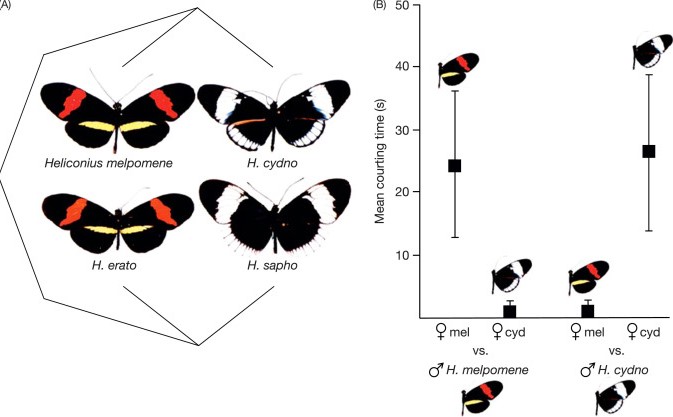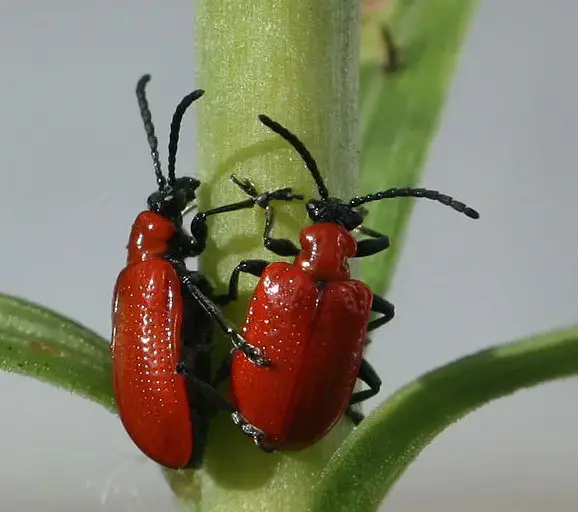Mating patterns in nature are as varied as the species themselves, playing a pivotal role in shaping the genetic architecture and evolutionary trajectory of populations. These patterns, which dictate how individuals select their mates, are crucial for understanding biodiversity and species survival. Among these, assortative and disassortative mating stand out for their significant impacts on genetic diversity and population dynamics.
Assortative mating occurs when individuals preferentially mate with others that are similar to themselves in certain traits, leading to an increase in genetic similarity within offspring. Conversely, disassortative mating happens when individuals are more likely to mate with those who differ from them, promoting genetic diversity within a population. These opposing strategies have profound implications for the evolution and sustainability of species.
While assortative mating can enhance the prevalence of advantageous traits, reinforcing the physical and behavioral characteristics within a species, disassortative mating introduces variability that can be crucial for adaptation and survival in changing environments. Both strategies serve as mechanisms through which populations navigate the evolutionary landscape, influenced by a complex interplay of genetic, environmental, and social factors.

Basics of Mating Patterns
Mating Pattern Overview
Mating patterns are the strategies that individuals within a species use to select their partners. These patterns are a cornerstone of evolutionary biology, shaping not just individual family trees but the entire genetic landscape of populations. They influence genetic diversity, affect species survival, and play a pivotal role in the evolutionary process. At their core, mating patterns reflect the myriad ways in which life forms ensure their continuation through reproduction.
Assortative Mating Explained
Assortative mating is a preference for partners who are phenotypically similar to oneself. This might include physical characteristics like size and coloration, or behavioral traits like aggression levels or mating calls.
- Example: In birds, assortative mating often occurs based on plumage color. Birds of a certain color preferentially mate with birds of the same color.
- Impact on Genetic Diversity: This pattern can lead to an increase in genetic similarity within a population, as offspring are more likely to inherit similar traits from both parents. While this might reinforce beneficial adaptations, it can also reduce genetic diversity, potentially making the population more vulnerable to diseases and environmental changes.
Disassortative Mating Defined
Contrastingly, disassortative mating involves selecting mates who are phenotypically different. This strategy promotes genetic diversity by mixing a wider range of alleles.
- Example: In some fish species, individuals may prefer mates with different color patterns, ensuring a blend of genetic traits in their offspring.
- Impact: This mating pattern enhances the genetic pool’s diversity within a population, which can be crucial for adaptation and resilience against environmental pressures.
Key Differences
Genetic Implications
The genetic outcomes of assortative and disassortative mating are fundamentally different. While assortative mating can lead to a homogenization of genetic traits, making certain alleles more common, disassortative mating introduces a variety of alleles, enhancing the genetic diversity. This diversity is key to a population’s ability to adapt to changing environments and resist threats.
Population Dynamics
The influence of these mating patterns on population structure is profound. Assortative mating can create subgroups within a population, potentially leading to speciation over time. On the other hand, disassortative mating works against the formation of such subgroups, promoting genetic mixing and unity within the population. Both strategies have their roles in species survival, depending on the environmental context and evolutionary pressures faced.
Evolutionary Consequences
The evolutionary impacts of assortative and disassortative mating are significant. Assortative mating might accelerate the process of natural selection by favoring the emergence and reinforcement of advantageous traits. Conversely, disassortative mating can boost genetic variability, providing a buffer against extinction by ensuring a wider range of traits that might be beneficial as conditions change.
Factors Influencing Mating Choices
Biological Factors
Innate preferences and traits are the primary drivers of mating patterns. These can include physical characteristics (such as size or color), genetic makeup, and pheromones. For instance, many species have evolved to recognize and prefer mates with certain genetic markers that indicate health or compatibility.
Environmental Influences
The environment plays a crucial role in shaping mating preferences. Factors such as population density, availability of mates, and environmental conditions can all influence the predominance of assortative or disassortative mating. Changes in the environment may prompt shifts in mating strategies to adapt to new challenges or opportunities.
Social and Behavioral Aspects
Social behavior and group dynamics significantly affect mating choices. In species with complex social structures, status, dominance, and group cohesion can influence mate selection. Social learning, where individuals learn preferences by observing others, can also lead to assortative or disassortative patterns based on the prevailing social norms.
Examples in Nature
Assortative Mating Cases
Nature offers numerous examples where assortative mating plays a crucial role in species survival and genetic propagation.
Birds: Many bird species exhibit assortative mating based on plumage. A study on Zebra Finches showed they prefer partners with similar body size and beak color, which suggests a strategy to enhance offspring’s survival chances by ensuring genetic traits conducive to their environment are passed on.
Plants: Even in plants, assortative mating occurs. For instance, Orchids display a preference for pollinators that are morphologically similar, facilitating the transfer of pollen to similar species and thus ensuring reproductive success.
Humans: In human populations, traits such as height, body size, and even behavioral characteristics like intelligence show patterns of assortative mating. Couples often share similarities in these traits more frequently than would be expected by chance.
Disassortative Mating Instances
Disassortative mating, though less common, plays a vital role in maintaining genetic diversity within populations.
Fish: In certain fish species, individuals select mates displaying markedly different color patterns, a behavior that likely prevents inbreeding and promotes healthier, more genetically diverse offspring.
Frogs: A fascinating case of disassortative mating has been observed in some frog populations, where females prefer males with calls that are significantly different from those in their immediate environment. This behavior helps avoid mating with close relatives.
Human Perspective
Assortative Mating in Humans
Evidence of assortative mating in humans is widespread and extends beyond physical traits to include factors such as personality, education level, and even political views. This pattern, while reinforcing certain traits within families and communities, can also have implications for genetic health, potentially increasing the prevalence of certain hereditary conditions.
Disassortative Trends
While less common, disassortative mating occurs in human societies, often as a result of social, cultural, or economic factors. For instance, individuals might select partners from different ethnic backgrounds, leading to increased genetic diversity within their offspring. This diversity can contribute to a population’s resilience and adaptability by broadening the genetic pool.
Implications for Conservation and Study
Genetic Diversity and Conservation
The balance between assortative and disassortative mating is crucial for conservation efforts. Understanding these patterns allows conservationists to design strategies that ensure the survival of endangered species by maintaining or enhancing their genetic diversity. For example, in captive breeding programs, pairing strategies can be adjusted to prevent excessive genetic similarity, which might increase the risk of inherited diseases.
Future Research Directions
The study of mating patterns offers a fertile ground for future research, with potential implications for conservation biology, genetic studies, and understanding the evolutionary history of species.
- Genetic Mechanisms: Investigating the genetic basis behind mating preferences can reveal insights into how these behaviors have evolved and are maintained within populations.
- Impact of Climate Change: As environmental conditions shift globally, understanding how mating patterns adapt is crucial for predicting species survival and planning conservation efforts.
- Human Societal Impact: Researching how human activities influence mating patterns in wildlife can help mitigate negative impacts, ensuring the continuity of natural selection and adaptation processes.
Frequently Asked Questions
What is assortative mating?
Assortative mating refers to the pattern where individuals select mates that are phenotypically similar to themselves. This behavior can reinforce specific traits within a population, potentially leading to reduced genetic diversity but increased prevalence of those traits.
How does disassortative mating affect genetic diversity?
Disassortative mating tends to increase genetic diversity within a population. By preferring mates that differ genetically, this mating pattern introduces a wider range of alleles into the offspring, potentially enhancing the population’s adaptability to environmental changes.
Can assortative mating lead to speciation?
Yes, assortative mating can contribute to speciation, especially when it results in reproductive isolation. Over time, if certain traits are consistently preferred, this can lead to the emergence of distinct groups within a population that no longer interbreed, eventually becoming separate species.
How do environmental factors influence mating patterns?
Environmental factors can significantly influence mating patterns by altering the availability of mates, the selection pressures on certain traits, or the behaviors that lead to mate choice. Changes in the environment can shift the balance between assortative and disassortative mating, depending on which strategy best ensures survival and reproduction under the new conditions.
Conclusion
Understanding the difference between assortative and disassortative mating is not just an academic exercise; it offers insights into the mechanisms that drive biodiversity, evolution, and species survival. These mating patterns highlight the intricate dance between genetics and environment, shaping the destiny of populations across generations. By examining how species choose their mates, we gain a deeper appreciation for the complexity of life and the evolutionary strategies that underpin its diversity.
As we continue to explore the nuances of assortative and disassortative mating, we unlock the potential to apply this knowledge toward conservation efforts and managing biodiversity. In doing so, we ensure a richer, more resilient natural world for future generations, underscoring the importance of preserving the myriad ways through which life on Earth finds its mate, propagates, and evolves.

